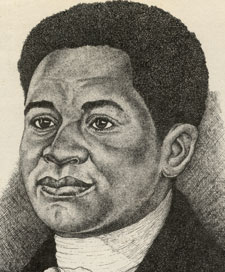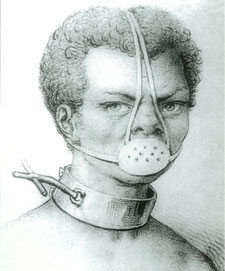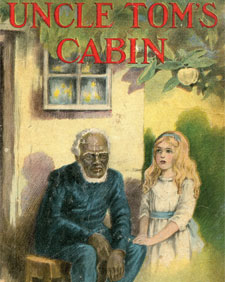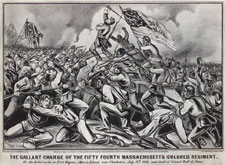Change and Continuity of Slavery and Indentured Servitude in Colonial American Society 1607 1754
Within several decades of being brought to the American colonies, Africans were stripped of human rights and enslaved as chattel, an enslavement that lasted more than two centuries. Slavers whipped slaves who displeased them. Clergy preached that slavery was the will of God. Scientists "proved" that blacks were less evolved-a subspecies of the human race. The invention of the cotton gin in 1793 solidified the importance of slavery to the South's economy. By the mid-19th century, America's westward expansion, along with a growing anti-slavery movement in the North, provoked a national debate over slavery that helped precipitate the American Civil War (1861-65). Though the Union victory freed the nation's four million slaves, the legacy of slavery influenced American history, from the chaotic years of Reconstruction (1865-77) to the civil rights movement that emerged in the 1950s.

1619 August
"Twenty and odd" Africans, probably seized from a Portuguese slave ship, were carried to Jamestown, Virginia, and traded for provisions. They were classified as indentured servants.
1640 July 9
When three runaway indentured servants were captured, the General Court of Colonial Virginia gave the white servants additional years to serve while John Punch, a black man, was sentenced to servitude for life. Punch was the first African in Virginia to be enslaved for life.
1641
Massachusetts became the first North American colony to recognize slavery as a legal institution.
1662
A Virginia law passed in 1662 stated that the status of the mother determined if a black child would be enslaved. Increasingly harsh and restrictive laws were passed over the next 40 years, culminating in the Virginia Slave Codes of 1705.
1676
Bacon's Rebellion in Virginia included poor whites and blacks fighting together, with the government's response hastening the transition to black slavery.
1688 February 18
Pennsylvania Quakers adopted the first formal anti-slavery resolution in American history.
1705
The Virginia Slave Code codified the status of slaves, further limited their freedom, and defined some rights of slave owners. It included provisions stating that non-Christians brought to Virginia would be slaves, even if they converted to Christianity. It also allowed slave owners to punish slaves without fear of legal repercussions and specified the rewards for the recapture of runaway slaves.
1712 April
A slave revolt in New York City, during which nine white men died, led to increased restrictions on slaves.

1770 March 5
Crispus Attucks, an ex-slave, became an early casualty of the American Revolution when he was shot and killed in what became known as the Boston Massacre. Although Attucks was credited as the leader of the event, debate raged for over a century as to whether he was a patriotic hero or a trouble-making villain.
1775 April 14
The Pennsylvania Society for the Abolition of Slavery was founded.
1775 December 30
General George Washington, revising an earlier edict, ordered recruiting officers to accept free blacks in the American Army. More than 5,000 blacks, mostly Northerners, fought against the British.
1776 July 4
The Continental Congress adopted the Declaration of Independence.

1793 February 12
Congress passed the first fugitive slave act, making it a crime to harbor an escaped slave or to interfere with the arrest of a slave.
1800 August 30
Gabriel Prosser, Jack Bowler, and others planned the first major slave rebellion, near Richmond, Virginia. As many as 1,000 slaves were prepared to participate, but a thunderstorm forced postponement and two traitors betrayed the cause. The blacks had met under the pretense of holding religious meetings.
1808 January 1
Laws banning the African slave trade went into effect in the United States and in all British colonies.
1816 April 9
The African Methodist Episcopal Church, the first all-black religious denomination in the United States, was formally organized, and Richard Allen was named its first bishop.
1816 December 28
The American Colonization Society was founded to transport freeborn blacks and emancipated slaves to Africa, leading to the creation of a colony that became the Republic of Liberia in 1847.
1820 March 3
The Missouri Compromise was approved by Congress. Missouri was admitted to the Union as a slave state, Maine entered as a free state, and slavery was prohibited in western territories north of Missouri's southern border.
1831 August 21-22
Nat Turner led the most brutal slave rebellion in United States history, attracting up to 75 slaves and killing 60 whites.
1839
A slave revolt aboard the Amistad resulted in the 1841 United States Supreme Court decision affirming that the schooner's African captives were free individuals with the right to resist "unlawful" slavery.
1850
The Compromise of 1850 brought California into the United States as a free state, banned public sale of slaves in the District of Columbia, opened up the rest of the lands seized from Mexico to settlement by slave owners, and committed the United States government to enforcement of a new fugitive slave law.

1852 March 20
The anti-slavery novel Uncle Tom's Cabin was published and, by year's end, 300,000 copies were sold in the United States. "Tom shows," dramatizations based on the plot of the novel, were widely performed by traveling companies into the 20th century, spreading common stereotypes of African Americans.
1854
The Kansas-Nebraska Act mandated that a popular vote of the settlers would determine if territories became free or slave states. The newly-formed Republican Party vowed to prevent new slave states and quickly became the majority party in nearly every northern state.

1857 March 6
In Dred Scott v. Sandford, the United States Supreme Court ruled that blacks were not citizens of the United States and denied Congress the ability to prohibit slavery in any federal territory.
1860-1861
Abraham Lincoln was elected President of the United States, southern states seceded, and the United States Civil War began. The 1860 census showed the black population of the United States to be 4,441,830, of which 3,953,760 were enslaved and 488,070 free.
1863 January 1
President Abraham Lincoln issued the Emancipation Proclamation, which made it clear that a Union victory in the Civil War would mean the end of slavery in the United States.

1863 July 18
The 54th Massachusetts Volunteer Infantry led a heroic attack on Fort Wagner in South Carolina. The 54th was the first all-black regiment recruited in the North for the Union army. As many as 185,000 black soldiers fought on the side of the Union.
1865 December 6
The 13th Amendment to the United States Constitution was ratified, outlawing slavery.
Source: https://www.ferris.edu/HTMLS/news/jimcrow/timeline/slavery.htm
0 Response to "Change and Continuity of Slavery and Indentured Servitude in Colonial American Society 1607 1754"
Post a Comment